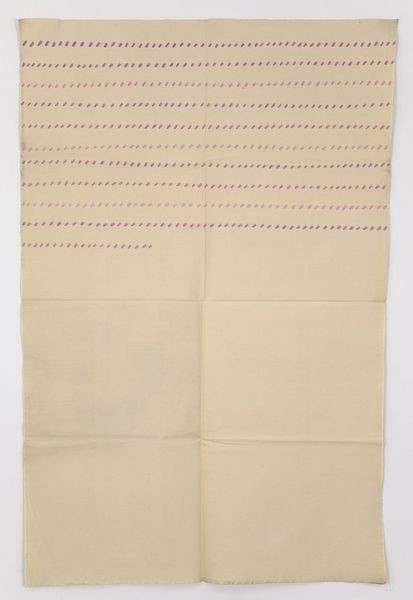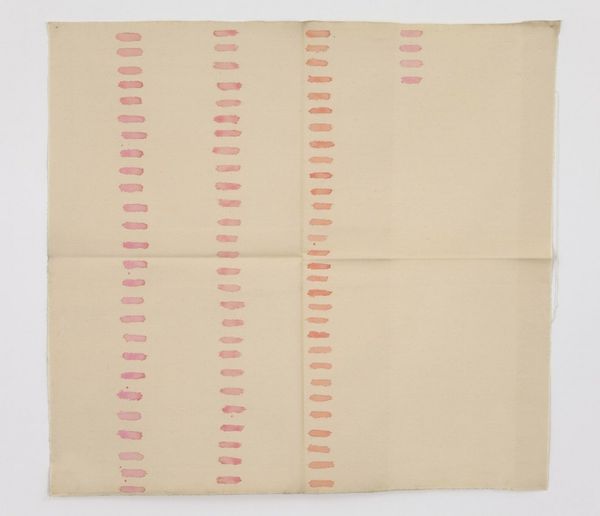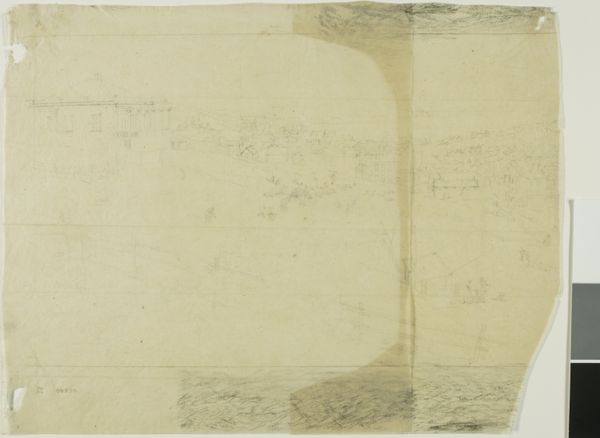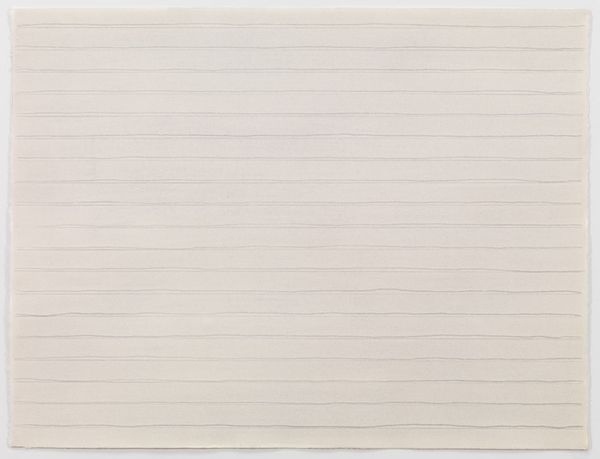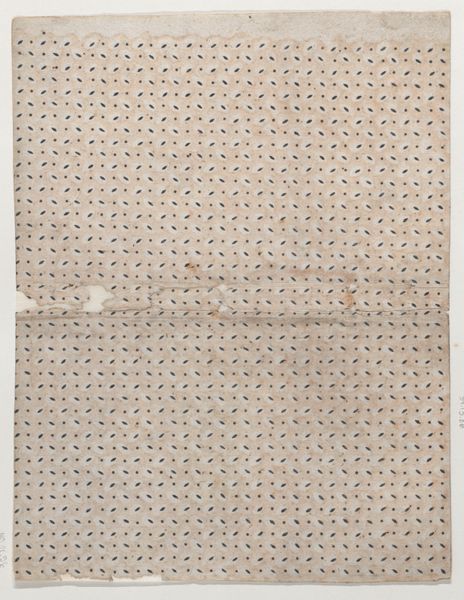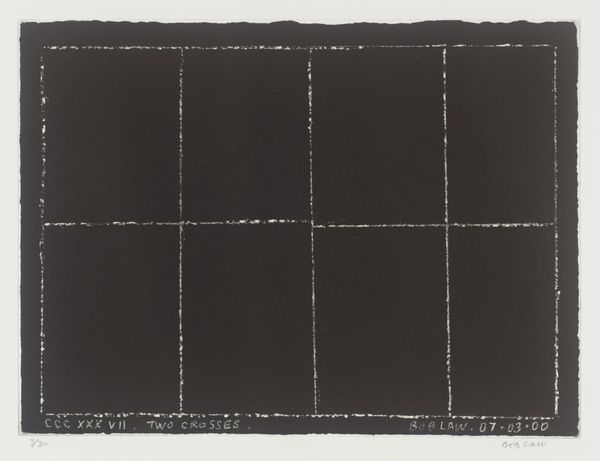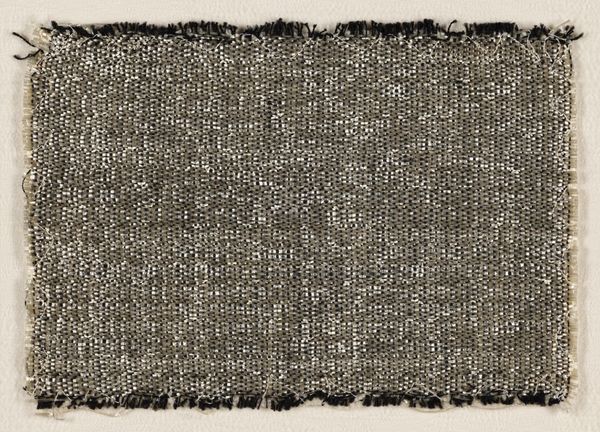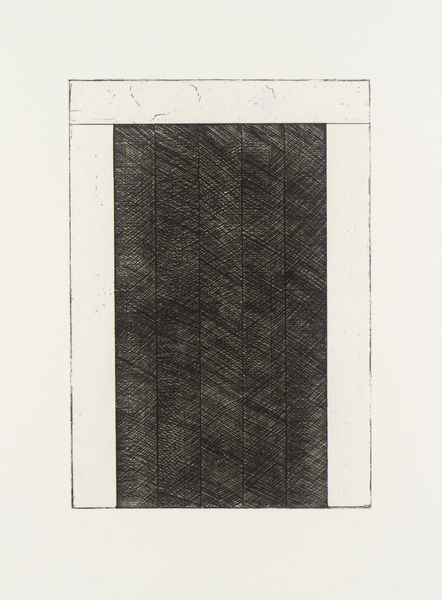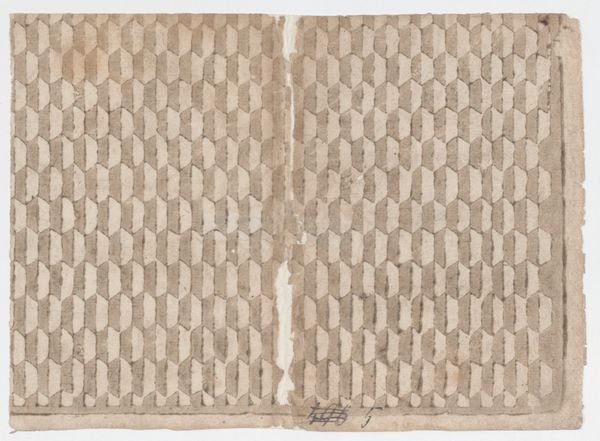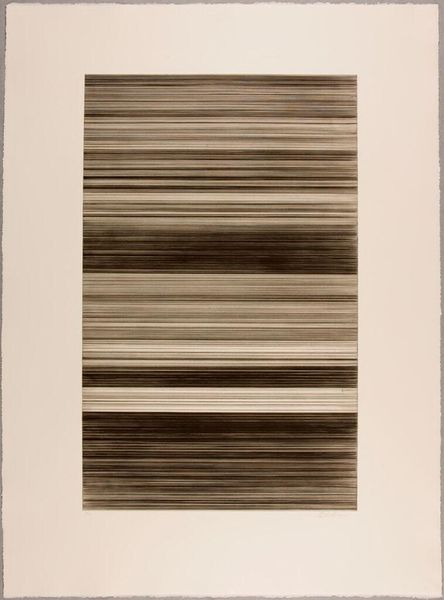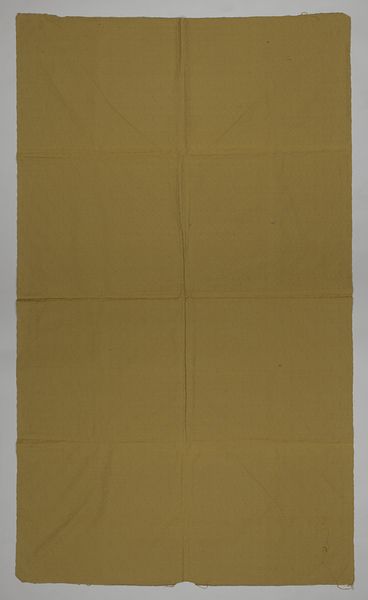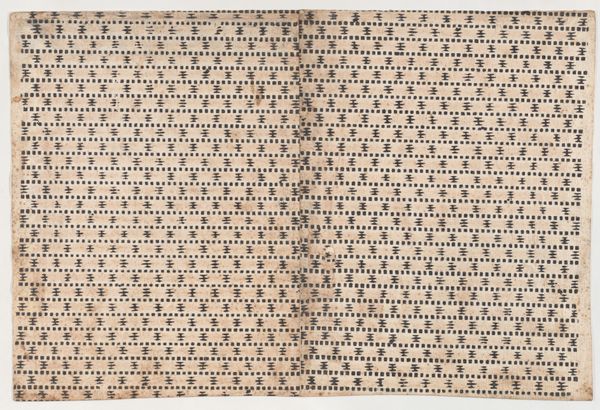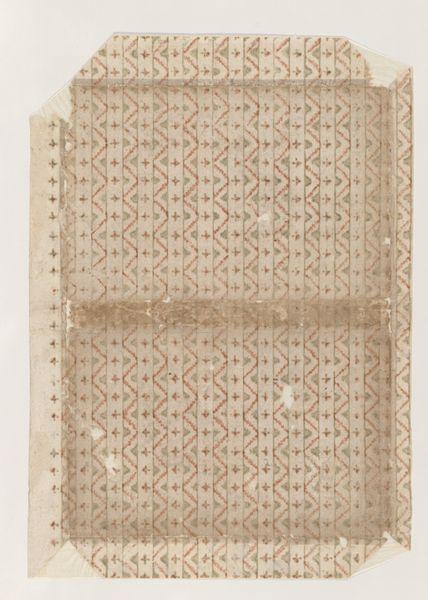
drawing, paper
#
drawing
#
conceptual-art
#
minimalism
#
paper
#
geometric-abstraction
#
line
Copyright: Kishio Suga,Fair Use
Editor: Here we have Kishio Suga's "A pair of unbeyond," created in 1974. It’s a drawing on paper, featuring a series of horizontal lines, some continuous, others fragmented, with denser clusters on either side of the page. It’s visually very quiet, but something about the breaks in the lines feels unsettling. What's your take on this piece? Curator: Well, this piece needs to be understood in the context of Mono-ha, the Japanese art movement that Suga was a key part of. Mono-ha artists were deeply concerned with the relationships between natural and industrial materials, often placing them in simple arrangements. This drawing, although two-dimensional, echoes that concern. Notice how the fragmented lines disrupt the illusion of a flat picture plane. What effect does that have, do you think? Editor: It makes the viewer conscious of the paper itself as an object. The lines aren't just representations; they’re interacting with the material. Curator: Precisely! Think about the social and political climate of 1970s Japan. There was a lot of questioning of established norms, a turning away from rapid industrialization toward a more elemental understanding of existence. Mono-ha arose directly from these anxieties. The simplicity of Suga's lines, the way they break apart and almost fail to fully form, speaks to a resistance against imposed structures and a search for something more authentic. Consider the title – "A pair of unbeyond". What possibilities do you think Suga hints at with a title like that? Editor: Perhaps, in embracing imperfection, the artist wanted to convey a feeling of limitlessness by un-shackling himself from pre-conceived and imposed social conventions? Curator: Exactly! He seems to push beyond boundaries, urging viewers to reassess their relationship with the world around them. A bold sentiment through subtle means. Editor: This was certainly thought-provoking. I'm left considering how social context shapes even the simplest art. Curator: And how art, in turn, can shape our understanding of society. There is definitely much to ponder about our relationship with both material and the immaterial structures.
Comments
No comments
Be the first to comment and join the conversation on the ultimate creative platform.
